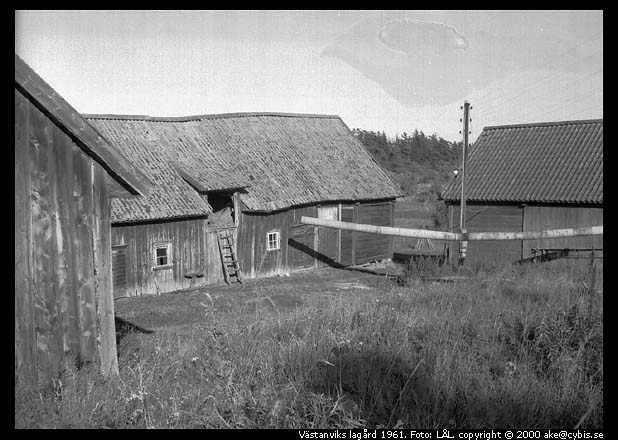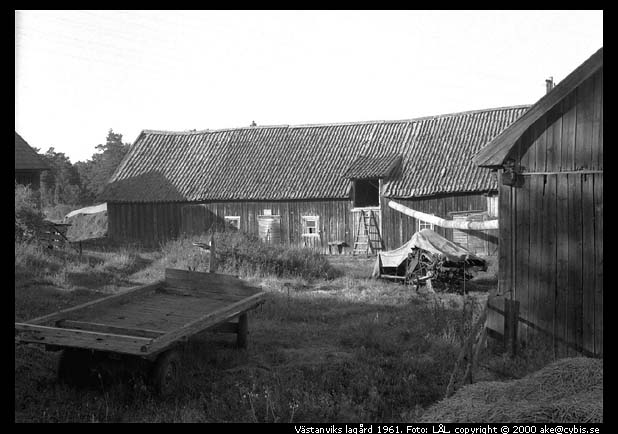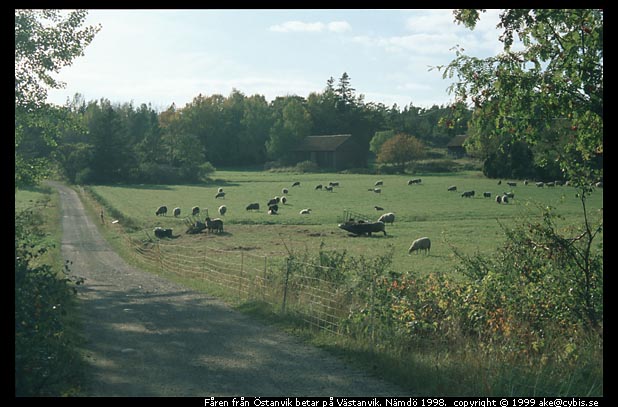
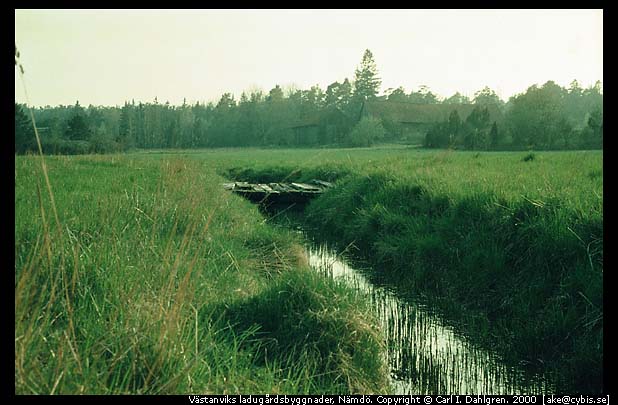

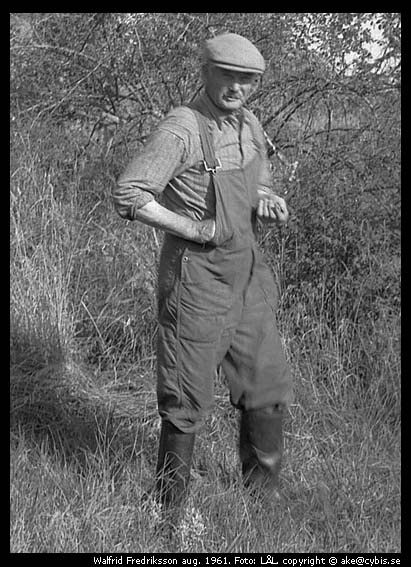
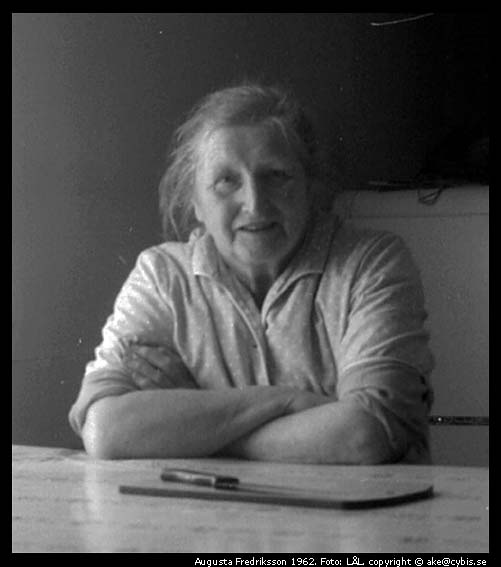

(There were about 37 acres (15 hectares) of arable land at Västanvik - a typical small Swedish farm of that time.)
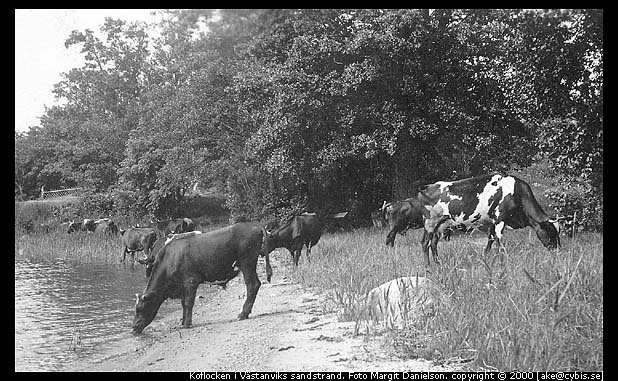
Milk and porridge was the principal diet in those days.
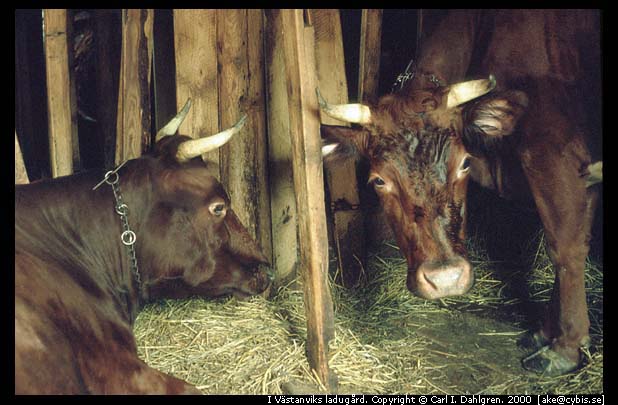
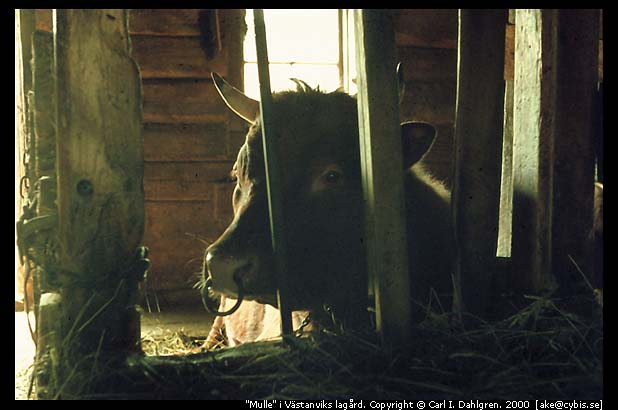



| At that time Lillträsket was a first-class cultivated area. Here with grazing cows in the late summer of 1944. Since then the ground - which has been the bottom of a lake - has settled. Today the whole area is a bit marshy and most of it is slowly being covered by bushes and trees. |

|
Lillträsket, 1944.
Valter Fredriksson berättar i Skärgård nr 45: Lillträsket - det är gärdena ovanför Långvik mot Västerängen till. Från början måste det ha varit en grund sjö som man börjat dika ur och odla upp. Men det var ju mossjord och sådan jord odlas liksom bort. Så då vart den oanvändbar åtminstone i de sanka områdena. Runt 1917 sprängde dom dän berget i gränsen mot Långvik så dom kom ner en och en halv meter i berget. Far min berättade att när dom sänkte vattennivån - då när vattnet gick ur - då sjönk markytan i Lillträsket med en meter och litet till. Men sedan fortsatte marken att långsamt sjunka. Sådan dymark den håller en mansålder. Sedan är den förbrukad. Jorden odlas bort och det sjunker. Det är ju inte så lyckat, men det är ju bra för stunden. Så här såg det ut 1944 i nedre ändan på Lillträsket. Det är alldeles nyplöjt. Bilden visar gärdet närmast Långvik. På backen i mitten brukade vi ställa en höstack - så den kallade vi Stackbacken. |
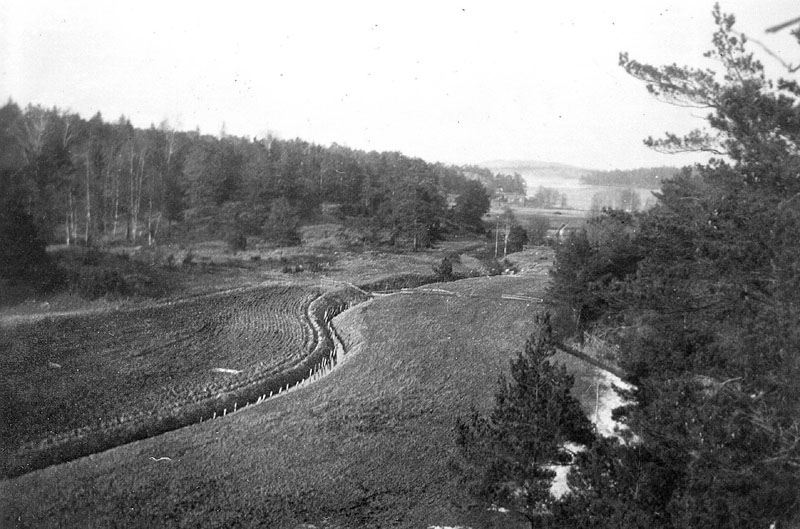
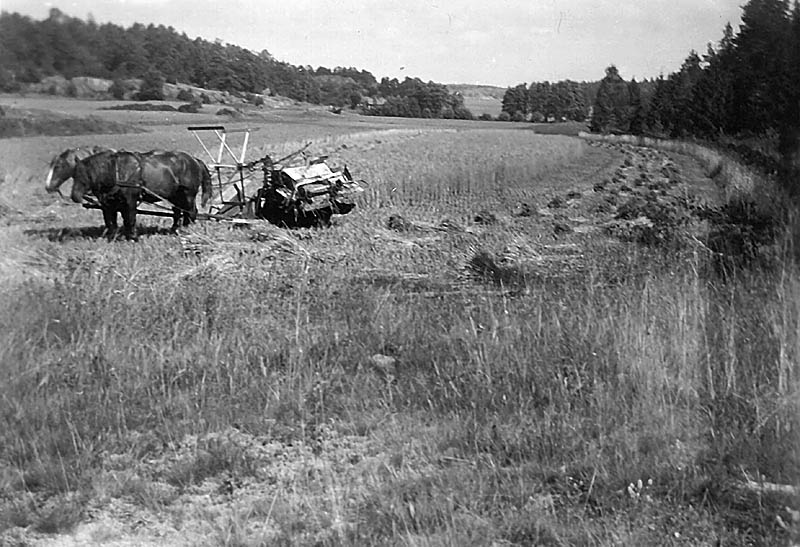

| Around all fields this type of fence were winding - otherwise the cows would have good times on the fields. If you found some cultivated land, you also found these wooden fences at the border where the forest started. In the 1950's the farmer started to repair decayed fences with barbed wire. |

| Not until the end of the 1950's the Västanvik farmer bought a tractor. Before that Walfrid had two horses - Putte and Bläsen - to draw various things. Here on their way up to the stable. |

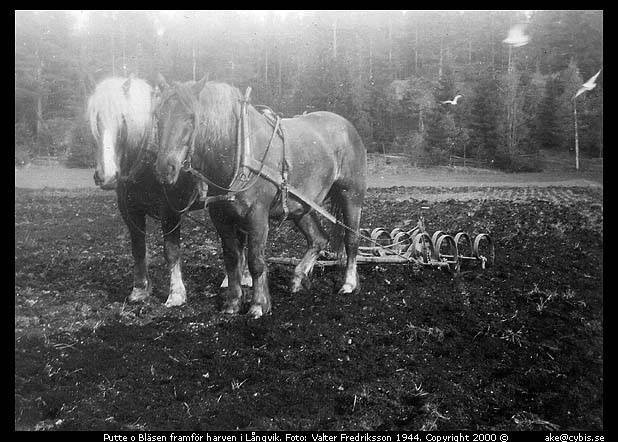
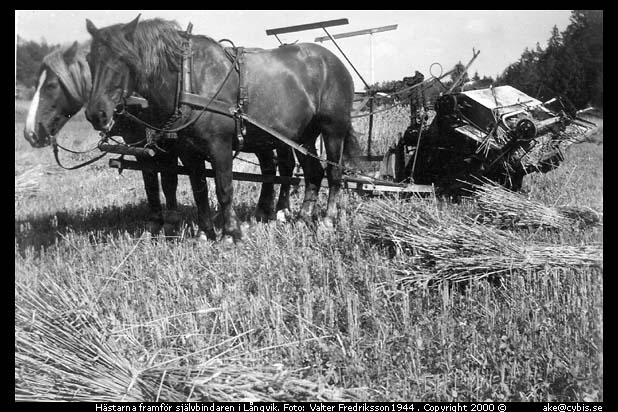
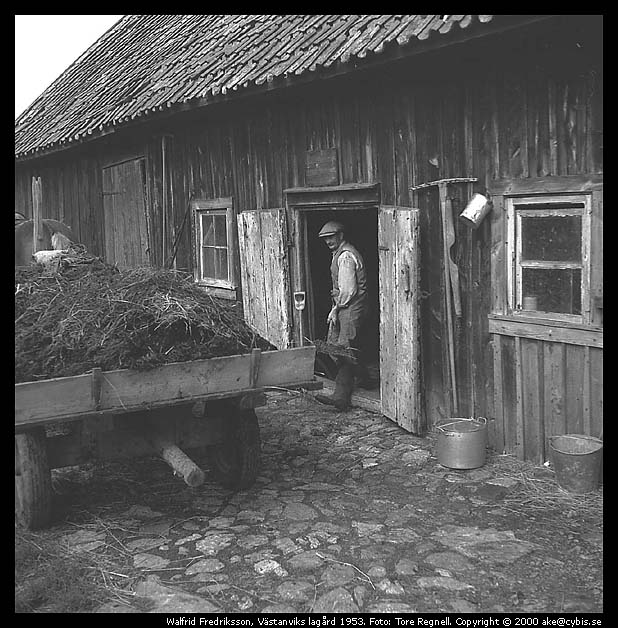
| Dung handling was very manual. Though usually Walfrid did not shovel the dung like this. He had a wheelbarrow without sides which he drove out on the dunghill on the other side of the barn. |
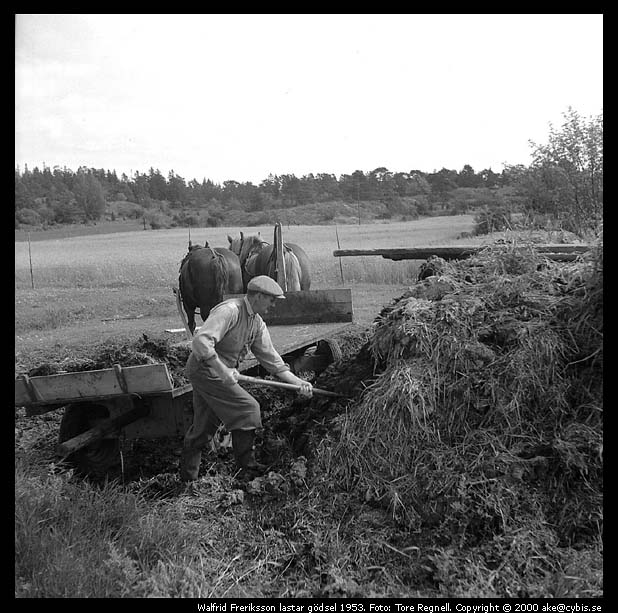

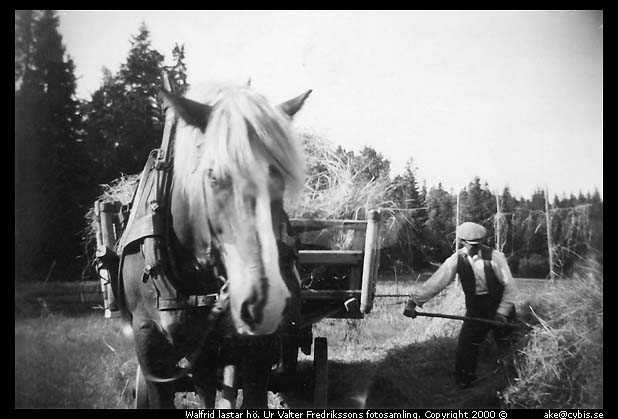
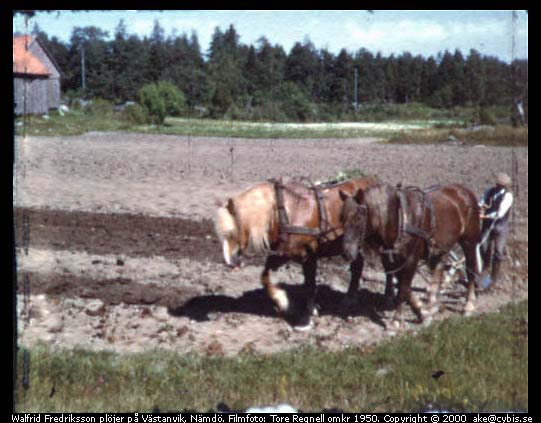
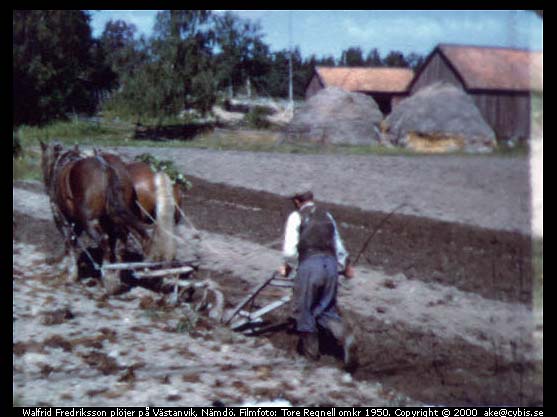
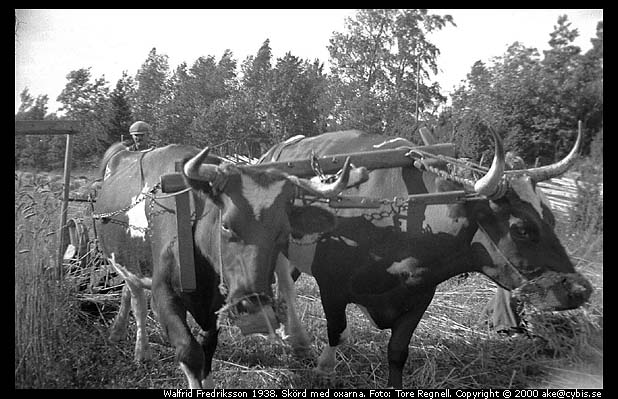
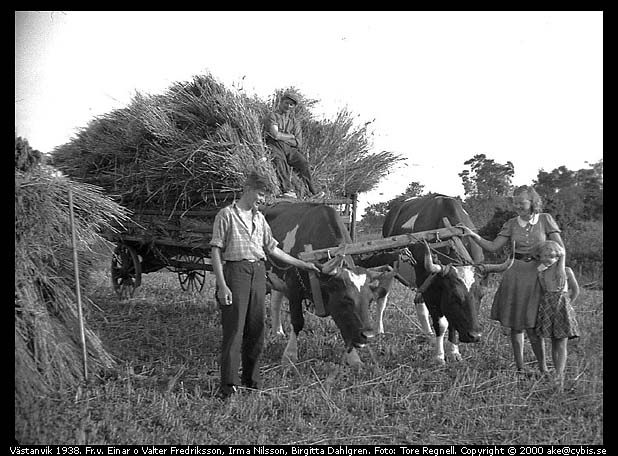
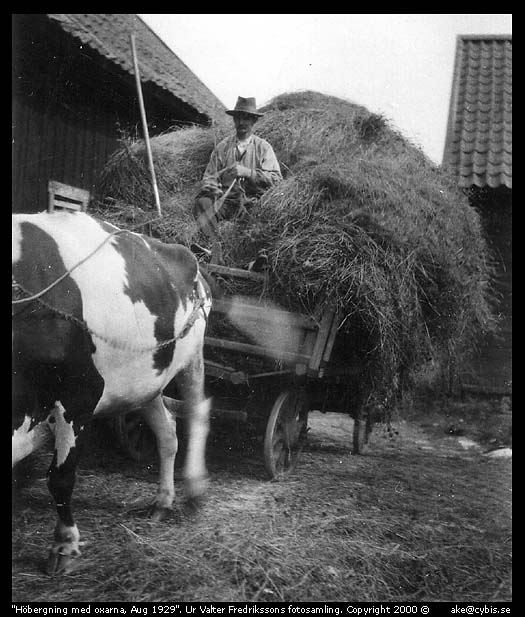
August 1929.
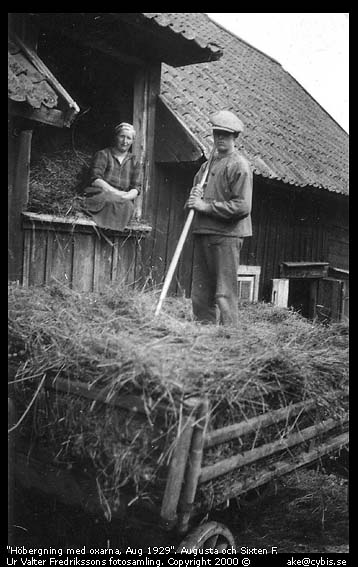
Augusta and her eldest son, Sixten, rest while the photo is taken. August 1929.

The parson's wife, Karin Röttorp, had her camera with when she met Walfrid with the snowplow equipage on the third day after Christmas Eve 1938.
